A hot water recirculating pump is designed to provide you with a reasonable degree of performance enhancement. It provides you access to a great degree of enhancement in terms of providing you instant hot water supply at the point of fixtures and faucets. They have been widely used in restaurants, hotels, and even in homes to reduce water wastage and annoying waiting times for the hot water supply.
While they are an excellent option for an enhanced and improved experience for a wide range of reasons, understanding the Pros and Cons can prove to be a great option on many counts. Let us analyze the Pros and Cons of the hot water recirculating pumps in a nutshell.
What Purpose Does a Recirculation Pump Serve?
The principal purpose that a hot water recirculating pump is installed in a home or anywhere else is to reduce the time you need to wait for the hot water to arrive after the faucet or tap is opened. A recirculating hot water pump an ideally be useful in avoiding unnecessary water wastage.
A hot water recirculating pump circulates the domestic hot water to every faucet and fixture on-demand instantly. It can continually circulate hot water and thus alleviate the need for waiting for the hot water to arrive at your shower or other fixtures.

Pros and Cons of the Hot Water Recirculating Pump
We will analyze the Pros and Cons of the Hot water recirculating pump for getting a clear understanding of how effective in resolving the hot water-related issues you may be facing.
Pros
- Saves Water Wastage
- Can Save Money
- Helps to Save Time
- No Need of Special Permits
Cons
- Initial Cost may be Little Higher
- Lukewarm Water at Colder Outlets
- Frequent Change of Sensor Valves
Let’s check out each of the pros & cons in a bit detail:
Saves Waer Wastage
The wait times for the hot water at your faucet can make you waste a considerable amount of water. If you assume a standard shower delivers around one litre of water per minute, and you need to wait for five minutes for the hot water to arrive, it would be a wastage of 5 litres of water. Calculate the amount of water wastage every time you open the shower and have to wait for the hot water.
Can Save Money
With the rats of water set to rise high, the wastage of water can prove to be very costly. Using the hot water recirculating pump can efficiently save you money. With a focus on the ever-increasing cost of water, opting for the right water-saving techniques can help you save a great deal of money. Hot water recirculating pump is one of the best options from that context.
Helps to Save Time
With less time for waiting for hot water, you will save a great deal of time. Assuming you have to wait for two minutes for the hot water each time, imagine the time wasted for the hot water over a year.
No Need of Special Permits
A hot water recirculating pump does not need special permission to install it. You may even get a few tax rebates and discounts in some regions as an incentive for saving water.
Initial Set-up Cost may be Little Higher
While the costs for the upkeep may not be on the higher side, the upfront costs will be a little heavy. You will need to hire a skilled plumber who has enough experience in setting up a hot water recirculating system. The cost is expected to be around USD 500 to USD 1000 in addition to the cost of the pump.
Lukewarm Water at Colder Outlets
In case you have not opted for a dedicated return line, you may end up getting lukewarm water at the fixtures that need cold water.
Frequent Change of Sensor Valves
A sensor valve is an integral part of a hot water recirculating pump system. In most of the hot water recirculation systems, you are expected to change the sensor valve once every two years. The sensor valve is typically installed at the farthest of the fixtures to shut off the pump as soon as the hot water loop has been completed. If it is installed outside the fixture, changing it may not be an issue. But if it forms a part of the system, you may need to incur an extra cost.
How Much Electricity Does a Hot Water Recirculating Pump Use?
If you are using a sensor and a timer in your hot water recirculating pump, then your electricity costs would be around USD 20 to USD 30 per year to the maximum extent. A hot water recirculating pump system can help you save around 5000 gallons of water per year. The energy costs will be around USD 0.12 per kW for a smaller pump. The cost will be based on the 250 feet pipe and daily working of around 8 hours.
If you want to save electricity on a hot water recirculating pump, it would be a good idea to install a sensor valve and a timer. Most of the hot water recirculating systems come with a sensor valve that helps shut down the pump when the hot water has completed a loop, and the temperature of the hot water in the loop is a set value. The pump will restart once the temperature reduces to the minimum threshold configured.
The built-in timer can be used to activate the sensor for a specific period of time. You can set the timer during the morning hours, or during summer months, or any other duration of your preferences. This will keep the hot water recirculation in your system only when it absolutely needed.
How Much Water Could You Save With A Water Recirculation Pump?
Assuming that a shower delivers water at a flow rate of 2.0 gallons per minute, a wait time of around 3 minutes – you will end up wasting around 6 gallons of water each time you wait for the hot water to arrive. An average American can save 5000+ litres of water per year with the hot water recirculating pump installed at your home.
However, there are different schools of thought about the average amount of water saved when using a hot water recirculating pump. It has widely been estimated that 31 gallons of water are wasted in an average US home while waiting for the hot water to arrive. Studies conducted in this realm have indicated that an average of 11400 gallons worth of water is wasted when waiting for the hot water per year. Based on those statistics, you can save a minimum of 11000 gallons of water as a national average if you install a hot water recirculating pump. Given an ever-increasing cost of water, that should definitely be a significant saving.
Do Hot Water Recirculation Pumps Save Money?
If you want to know whether hot water recirculation pumps help you save money, you need to analyze it in the context of varying parameters. While the initial and maintenance cost may appear to be on the higher side, the costs are adjusted based on the other parameters such as on the water saved or the time you will save on waiting for hot water.
Saving Water
On the face of it, you can clearly see is that you can save around 6 gallons of water per wash or shower with the assumption that you would otherwise waste waiting for the hot water to arrive. Assuming an average water loss or wastage of 30 gallons, you would indeed be saving a tremendous amount of water.
Given the fact that water prices are consistently rising, that should be a significant saving. You can even consider it to be a great saving in terms of money as you will be saving a good deal of money on your water charges.
Saving Electricity
The modern hot water recirculating pump systems come with an advanced sensor technology which can be used for saving electricity. Of course, if you compare the regular water heater technique without the recirculation technology can help you save on your electricity bills. But, given the cost of water, you would indeed be saved.
If you install a hot water recirculating pump with a timer and a proper sensor valve, you will end up saving enough money on the water wasted or even in terms of the electricity usage. Of course, electricity charges would always be extra in the case of a hot water recirculating system.
Saving Maintenance Cost
Hot water recirculation system can be helpful in reducing water wastage and thus can be useful in reducing the workload on your water heater. The right type of timer and sensor valves can be quite handy in reducing the need for regular maintenance.
The hot water recirculation system streamlines the hot water availability across your fixtures continually, and this can be quite practical in reducing the maintenance requirements you may have. Ultimately, the reduced maintenance costs can be quite useful in helping you save money.
Hot Water Recirculation System Problems You May Encounter
The hot water recirculation pump system can be a blessing in disguise and can help you achieve a huge number of benefits in getting the best out of the system. However, as with any technology or machine-based system, you are quite likely to come across a few issues. While it provides you with hot water, you may come across a few issues. Let us check out the typical hot water recirculation problems and find how to address them.
Wastage of Water
This can be one of the major problems with the hot water recirculation pump. Since the pump is constantly heating and recirculating the water, it can cause an increasing power cost. If the distance between your water heater and the farthest fixture is much longer, the power wastage can be even more.
One way to address this concern can be to insulate all the supply and return lines. This will be helpful in reducing the heat loss considerably, and subsequently, the pump and heater do not need to work continuously. Using an effective sensor valve can be an extremely practical solution.
Corrosion in Pipes
The pipes and other components can have an accelerated corrosion effect due to the flow of water. This can continue to become a concentrated and expensive problem. The aggressive water chemistry and an excessive flow velocity can cause a huge degree of corrosion.
You are likely to face the issue at the bends, elbows, and tees. One of the best options that can be helpful in reducing these problems can be to avoid the sudden changes in the pipe directions and use a low capacity pump that does not increase the flow of the water in such a way that it induces corrosion.
Lower Flow Rate
The pumps used in the hot water recirculation system may typically have a smaller motor. This will result in the development of small head pressure. This can result in a low flow rate of the water. Some of the motors may even struggle to start up the heater.
This is a problem that you would perhaps be not able to solve as such. Checking out the distance of your piping and plumbing beforehand and then picking the right pump and motor would help you reduce the problem to a greater extent.
Noisy Pump Operation
The noise problems can ideally happen as a result of sudden power failures. Any sudden power failure can make the air to enter into the system. The best way to resolve this would be to bleed the system and remove any air stuck in the system.
Wrong pump size can also be one of the causes of the issues. A too powerful or even a weak pump can make noise. Consultation with a professional should ideally help you pick the right pump size so that you can avoid the issues if any.
The Closing Thoughts
Well, while the hot water recirculating pump comes with a huge set of advantages and benefits, it does have its own Pros and Cons. Understanding the issues you may face with the pump and solving the issues in the right way can ideally be helpful in achieving better results.
Check out the benefits and pay heed to the issues you may face so that you resolve the problems right away. In any case, we definitely consider the hot water recirculation systems a great option for almost all your expectations.


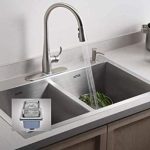
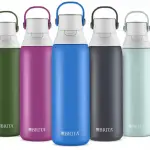
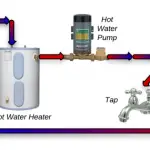
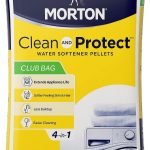
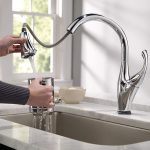


Add Comment